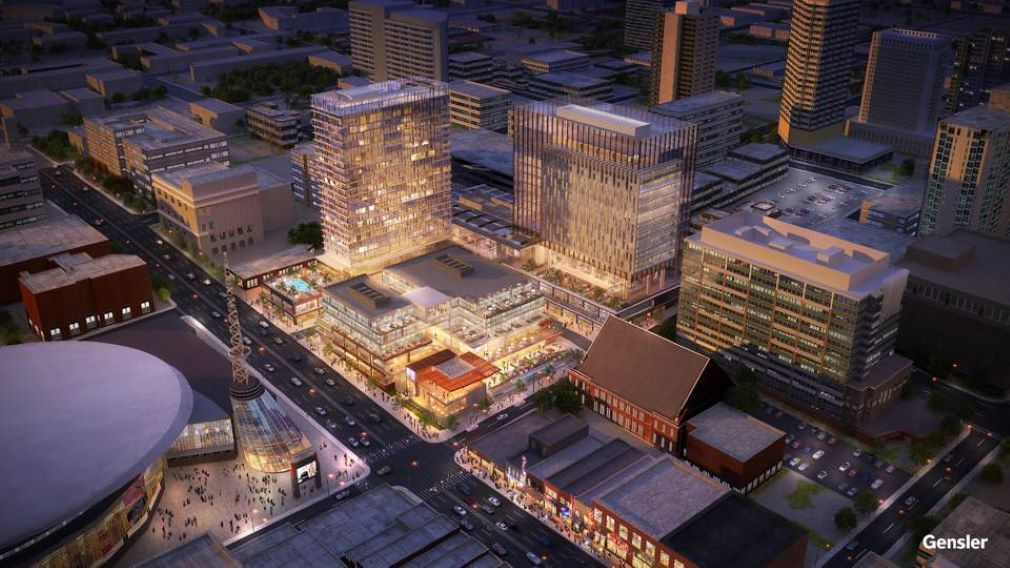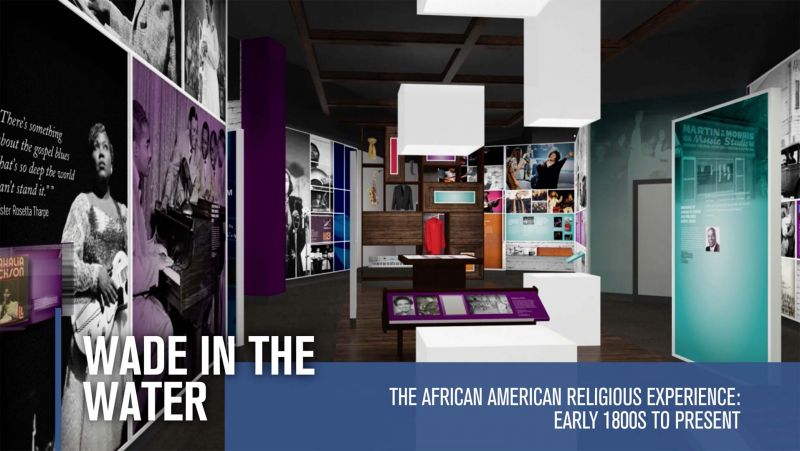ICYMI: National Museum of African American Music Opens in Nashville

The National Museum of African American Music (NMAAM) opened its doors to much anticipation in January 2021. The museum is the only museum “dedicated to preserving and celebrating the many music genres created, influenced, and inspired by African Americans.”
Located in the heart of Nashville, the NMAAM is a perfect fit for Music City. Tennessee was critical during the Great Migration (1916-1970), when approximately six million African Americans left the South to relocate to large cities throughout the northeast, midwest, and western United States. Nashville also holds significance in African American music history as artists like The Fisk Jubilee Singers, Jimi Hendrix, Ray Charles, and Little Richard spent time early in their careers in Nashville. NMAAM is poised to “strengthen and diversify the ‘Music City’ brand with compelling connections to both local and national musical distinctions.” Sharing the state’s spotlight with other Tennessee music institutions like Chattanooga’s Bessie Smith Museum, Nashville’s Country Music Hall of Fame, Grand Ole Opry, and Musician’s Hall of Fame, Memphis’ Graceland, Stax Museum of American Soul Music, and Sun Studios, the NMAAM is a welcomed addition.
Initially proposed in 2002, the project evolved over the next decade from a local to a national initiative and refined its purpose from a broad focus on arts, culture, and music in the African American community to exclusively cover music.
The museum includes interactive galleries that “illuminate Nashville’s significant influence and share how African American music inspires others around the world.” Also present at the museum is a state-of-the-art performance hall that will screen films, host lectures, and stage concerts featuring local and internationally-known acts.
Rivers of Rhythm Pathway: The central “spine” of the museum experience features interactive panels and an animated timeline that links American history with American music history. Visitors will experience the early beginnings of American music through the lens of Southern religious, blues, to the most contemporary of R&B and hip-hop genres.

Wade in the Water (The African American Religious Experience: Early 1800s to Present): The gallery presents the history and influence of religious music from indigenous African music that survived during slavery, to the formation of African American spirituals and hymns, to the “Golden Age of Gospel” (1940s-1960s) and its commercial growth. Visitors will experience the influence of gospel vocal groups on secular singing in doo-wop, R&B, and soul music.

Crossroads (The Great Migration and the Emergence of Blues: Early 1900s): This gallery chronicles the history and influence of the blues, which has its origins rooted in the work songs and field hollers sung by sharecroppers and lumber mill workers throughout the 19th century, post-slavery period in the Deep South and Mississippi Delta. Patrons will encounter female blues singers who recorded “race records” in the 1920s, the influence of the blues on white country music, and the rock and roll sound of the 1950s.

A Love Supreme (Harlem Renaissance and the Emergence of Jazz): This gallery begins with the survival of African indigenous musical traditions in the Congo Square in New Orleans, Louisiana, and explores its influence on a new form of music emerging, “jazz.” The genre, a hybrid of spirituals, ragtime, blues, and minstrelsy, jazz becomes a national phenomenon with its migration to urban centers in the north. Visitors will explore the transformation of jazz into different musical styles like Dixieland, swing, bebop, cool and hard bop, and fusion.

One Nation Under a Groove (Civil Rights Movement: 1940s to Present): This gallery documents the history and influence of R&B that emerged in the years following World War II. R&B, a blend of gospel, jazz, and blues, fueled the development of American music for decades, aiding in the advent of soul, funk, disco, house, techno, and hip-hop. R&B rose alongside the significant technological shifts that altered how music was produced and disseminated, including the arrival of the jukebox and radio. Stories featured in this gallery include those of Motown, Stax, and the Philadelphia International record labels, and the debut of Soul Train (1971) and MTV (1980).

The Message (Urban Renewal: 1970s to Present): Explore the origins of hip-hop and rap in the urban decay of New York’s South Bronx inner city. Visitors will learn about the era’s minority youth culture that brought DJ-driven music, breakdancing, graffiti art, and streetwear fashion under the umbrellas of hip-hop. Technology is also an integral part of this gallery as it drives hip-hop through the practice of sampling, scratching, and beatboxing as driving forces for early turntablists.

At the time of publication, NMAAM is currently operating via a timed ticket system, and reservations are highly encouraged for visitors to the museum. Thanks to a partnership between NAMM and the NMAAM, Summer NAMM attendees are offered discounted tickets priced at $18.75/adult (normally $24.95), 10% off museum store merchandise, and discounts on private event space. For more information, please visit https://nmaam.org/.